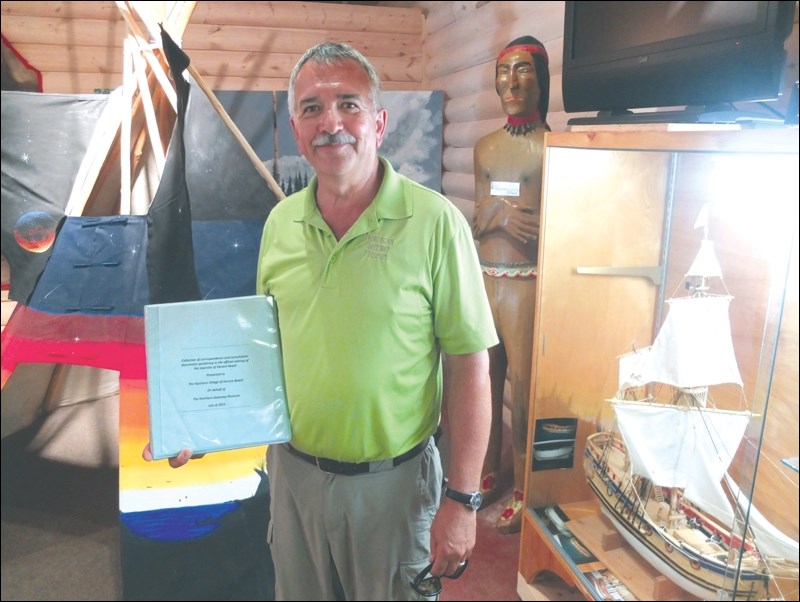Nestled along the eastern shore of Amisk Lake, it’s the scenic Northern Village of Flin Port. Or should we say West Flon? Green Flon? How about Amisk Cove?
Those and other names were given consideration in the 1930s before the community we now know as Denare Beach received its moniker.
“How this name was selected is an interesting story in itself,” said Les Oystryk of the village’s Northern Gateway Museum.
Oystryk has thoroughly researched the naming of Denare Beach. At the museum’s open house this past Sunday, July 26, he shared his findings.
The history of Amisk Lake (Amisk being the Cree word for “beaver”) dates back to the fur trade era. To this day, Denare Beach is informally known as Beaver Lake.
Within driving distance of Denare Beach is the former site of Beaver City, a long-abandoned gold-rush mining town on the south shore of Amisk Lake.
By the early 1930s, the modern community surrounded by Amisk Lake required a name.
Here is how John Barnett, then deputy minister of Saskatchewan’s Department of Municipal Affairs, described the situation in a November 1932 letter obtained by Oystryk:
“The town site is being established to meet the demand for a local commercial centre at Amisk Lake resulting from mining development in the district and also to provide an attractive summer resort for the citizens of Flin Flon.”
Barnett consulted with several groups in the area to settle on a name. He sent letters to RE Phelan, general manager of HBM&S (now Hudbay), TC Davis, MLA for the Prince Albert region, Harry Moody of the Beaver Lake Prospectors’ Association, and the Flin Flon Board of Trade, the forerunner to the Flin Flon and District Chamber of Commerce.
“Over the course of two months, many letters were exchanged with a number of possible names being considered for the new community,” said Oystryk.
Naturally the word “beaver” factored into the discussion around what to title the upstart community.
But as Barnett explained in one of his letters, there were already too many communities across Canada that included that word. Postal authorities wanted towns to avoid the term so as to prevent further duplication of names across the country.
As such, Barnett wrote, names such as Beaver Bank, Beaver Cove, Beaverdale, Beaverdell, Beaver Harbour and Beaver Point were to be avoided.
Barnett asked the Board of Trade for its views on a possible name. As he explained:
“I anticipate that the businessmen who can constitute the Board of Trade of Flin Flon are of course, at least in the first instance, going to be those who are most directly interested in a development and growth of this new town site.”
Barnett also mentioned that consideration had been given to names such as West Flon, Flin Port, Amisk Bay, Amisk Cove, Amisk Shore, Amisk Beach, Amisk Town and Amiskville.
In his research, Oystryk uncovered the very first survey plan submitted for approval for the town site. It referred to the community as Green Flon.
In his letter, Barnett offered a surprising suggestion.
“In connection with the social activities of the staff of this department, our officials have coined a name composed of the first two letters of the main words of the term Department of Natural Resources, that word being Denare,” he wrote.
For some reason, the term Denare carried widespread appeal. In a January 9, 1933 letter to Barnett, the Beaver Lake Prospectors’ Association proposed the name Denare Beach.
“Everyone else agreed and in accordance with a consensus decision, Deputy Minister Barnett wrote a letter to Harry Moody of the Beaver Lake Prospectors’ Association and on February 2, 1933, they confirmed that that would be the name of the community,” said Oystryk.
Not only did Oystryk share this story at Sunday’s open house, he also presented the Northern Village of Denare Beach with a collection of correspondence and consultation documents pertaining to the town’s official naming.
Quoting radio legend Paul Harvey, Oystryk concluded his open house presentation with some familiar words.
“And now you know the rest of the story.”




